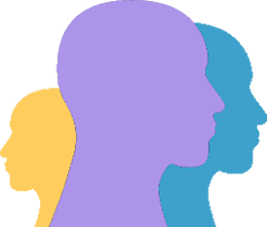Rare Care Computer Talk
The use of the Internet and mobile phones becomes an indispensable part of our daily lives. Apps can help to travel, order a taxi, handle your finances, all around the world. How about health and well-being? Especially for those who need it most: individuals with a chronic, disabling and rare condition. To have direct access to relevant medical information may be lifesaving.
Now, what is the problem? In the Netherlands, for example, medical data are locked in various electronic health systems from hospitals, laboratories, pharmacies, etc. It is sometimes possible to have a look at the data. Imagine a situation you need several log-ins and screens to get the whole picture. The solution is a personal health environment in which all data are collected, providing each individual with the possibility to guard an overview. The key to self-management.
How to unlock? We need medical language translated in computer text. Words can be made computer-readable by the use of international terminologies. These digital standards, terminologies, and classifications, can be exchanged by another standard: HL7/FHIR. FHIR stands for Fast Healthcare Interoperability Resources, developed internationally to unlock electronic health records for (mobile) personal applications. Instead of trying to find all information individually it is possible to retrieve relevant data to a personal health environment. So each individual could follow the results of a laboratory test as well as prescribed medicines at the same time.
Rare Care World is designed by and for persons with a rare condition as a knowledge and information ecosystem. To translate medical language in a computer-readable text a specific set of international terminologies is assigned to each rare condition. An example of a terminology is the international standard for identifying health measurements, observations, and documents: LOINC.
There is more to understand, computers need to have a description of how one program can communicate with another. The solution is called an application programming interface (API). Rare Care World can provide technical, based on queries, an API for each rare condition including the set of related terminologies. Thus, a collection of specified API’s can be viewed as a library of rare diseases in computer language.
Take Shwachman Diamond Syndrome a rare condition with a risk on severe neutropenia, low white blood cells. We need to tell the computer that Shwachman Diamond Syndrome is associated with a risk of neutropenia and that we want to follow the neutrophil values, no matter which laboratory they were established.
Proof of Technology. The Center for Information Technology of the University of Groningen was willing to collaborate with us. They offered a so-called sandbox, a test environment. Together we proved the concept of using a Rare Care API to retrieve selected data from the electronic health record. The Rare Care API could, after receiving a valid identifier for a rare condition, return an overview of the LOINC codes that are relevant for Shwachman Diamond Syndrome to a personal health environment:
"condition": "Shwachman Diamond Syndrome",
"identifiers": [
"diseases": [
{
"name": "Neutropenia",
"loinc": [
{
"code": "751-8",
"description": "Neutrophils in blood",
"unit": "number/volume (103/μL)"
What does this mean? Worldwide persons with a rare and chronic condition could be enabled to retrieve and follow their personal data in a uniform manner. Think of the importance of a regular check of Ferritin (LOINC 20567-4 Ferritin in Serum or Plasma Units: mass/volume (µg/L) to prevent and treat iron storage in people with sickle cell disease and thalassemia all around the world. While the Dutch government is supporting the development of a Personal Health Environment for everyone in the Netherlands, we should at the same time consider a global interoperable network.
We thank the Center for Information Technology of the University of Groningen for our collaboration, thus far!
This work has been an outcome of the HL7 Netherlands workshop meeting in 2019.
